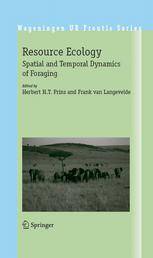

Most ebook files are in PDF format, so you can easily read them using various software such as Foxit Reader or directly on the Google Chrome browser.
Some ebook files are released by publishers in other formats such as .awz, .mobi, .epub, .fb2, etc. You may need to install specific software to read these formats on mobile/PC, such as Calibre.
Please read the tutorial at this link: https://ebookbell.com/faq
We offer FREE conversion to the popular formats you request; however, this may take some time. Therefore, right after payment, please email us, and we will try to provide the service as quickly as possible.
For some exceptional file formats or broken links (if any), please refrain from opening any disputes. Instead, email us first, and we will try to assist within a maximum of 6 hours.
EbookBell Team

4.7
26 reviewsThis multi-author book deals with ‘resource ecology’, which is the ecology of trophic interactions between consumers and their resources. Resource ecology is perhaps the most central part of ecology. In its linkage between foraging theory and spatial ecology, it shows how old and fundamental questions can be tackled afresh. It addresses crucial aspects of the interactions between consumers and resources. Foraging is the central process in resource ecology because it leads to growth, survival and reproduction of the animal. Resource ecology forms the basis for comprehending the functioning of multi-species assemblages, and is thus key to grasp the organisation of biodiversity.
All chapters in the book were prepared for a small symposium and were circulated in advance to the participants. They were subjected to intense group discussions; comments and critiques were subsequently used for writing new versions, which were peer-reviewed. For the purposes of stimulating future research, each chapter ends with two or three testable hypotheses. Each chapter is followed by a comment. This makes the book ideal for teaching and course work, because it highlights the fact that ecology is a living and active research field.